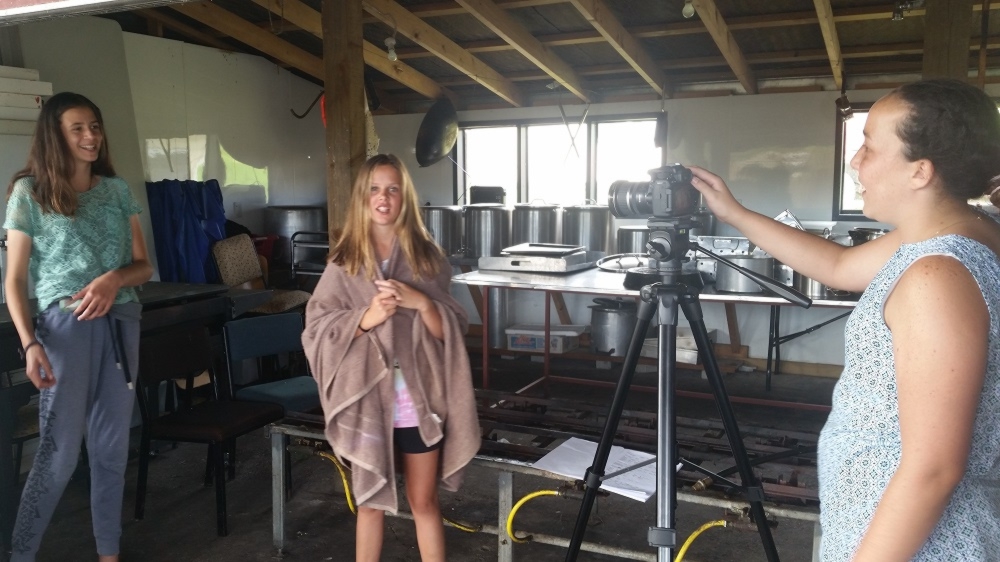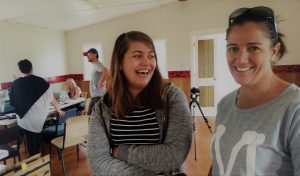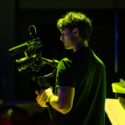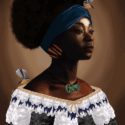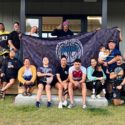The future of Aotearoa’s filmmaking is in good hands. Rangatahi as young as six are currently putting the finishing touches to their entries in this year’s E Tū Whānau Rangatahi Film Making Challenge, a well-established feature of the internationally lauded Māoriland Film Festival.
The event starts on March 15 and will be held in Ōtaki.
Rangatahi organising festival
In a first for Māoriland, rangatahi are organising and running their own festival this year. All six members of the organising group, Ngā Pakiaka are previous winners of awards in both the E Tū Whānau Rangatahi Film Making Challenge and the national youth film making challenge, The Outlook for Someday.
One of them is 14-year-old Eva Hakaraia who has won awards in both categories. This year she’s helping other rangatahi tell their stories on film.
Members of Eva’s immediate whānau work in the arts so story-telling is in her blood, but she learnt more about film as a way of sharing stories by taking part in E Tū Whānau sponsored workshops. Most entries in the E Tū Whānau Rangatahi Film Making Challenge were developed in these workshops which have been run by experienced actors and film makers at schools throughout the lower North Island for the past two years.
Building skills
On a sunny Sunday two weeks before the festival opened, Eva was sitting in front of a couple of computer screens set up on a table in the whare kai of Te Pou O Tainui Marae in Ōtaki, editing footage shot by other rangatahi.
Like many young people, Eva and her friends have been playing with their parents’ cameras or phones since they were little.
“We used to make films about anything – our toys, our friends, music videos. I’d cringe now if I saw them, but we had fun.”
Her technical skills have grown a lot since those days.
“I’m a perfectionist. Everything I film now has to be pretty, not that the subject has to be pretty but the film making itself does. I can see good camera angles now. I can see good lighting.”
Joyful
While Eva was editing, another member of Ngā Pakiaka, 12-year-old director Kaea Hakaraia was in the marae’s whare tipuna mentoring the four-member cast and crew shooting their film about a boy who helps dead spirits transition to the after-life.
“Making films gives us a chance to manaaki our gifts and to spread our messages,” Kaea says.
Manawatoa Nakhle plays the lead in their film. He describes the process of film making from the initial idea through scripting, filming and editing, as joyful.
“Our story is quite serious but sometimes we have to do five takes for one scene because we’re laughing so much.”
Planning essential
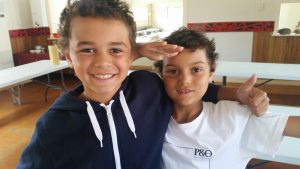
Te Ahitaiwa Hakaraia Hosking (left) – “You have to really think about the story before you pick up a camera”.
In the marae kitchen, two members of another crew were taking a break from shooting their film. It’s about a boy grieving for his dead mother and who turns to his ancestors for guidance. Director, Te Ahitaiwa Hakaraia Hosking has just finished acting in another short film by a very experienced, award winning feature film sound designer, Dave Whitehead. He’s learning fast about all aspects of film making.
“Acting can be fun sometimes and it can also be really boring because you can spend a lot of time just waiting around. As a director though, it’s my job is to make sure everything is right. You have to think about all the little details, especially the story. I’ve learnt how to use a storyboard. You have to really think about the story carefully before you pick up a camera.”
Homelessness
In a room at the back of the marae, 15-year-old Pare Finlay is behind the camera directing 13-year-old Jayda Roberts and 12-year-old Ari Leason in a scene for their short film about a homeless person taunted by a wealthier girl who later finds herself homeless. She is treated with kindness and generosity by the other girl whose fortunes have changed but who remembers how important it is to awhi those who need it.
The film’s message, says Pare, is to be humble with what you have and to treat others as you would want to be treated yourself.
Twelve-year-old Jakita Paranihi is both an actor and sound recordist on this shoot. The girls said they wanted their film to mean something but argued a bit about the topic before making their decision.
“Some wanted it to be about climate change, or drones or friends. Then we thought it should be about something people our age think a lot about and homelessness is one of those issues,” says Pare.
Youth perspective
Māoriland’s Festival Co-ordinator, Madeleine de Young has been working closely with the Ngā Pakiaka collective and the other aspiring young film makers.
“We’re looking for storytellers who can tell their story from their own, youthful perspectives.”
“Some may have access to flash gear, or use online tools. Other’s won’t. We didn’t want technology to be a barrier to their expression. They can use anything that will show the judges how they frame their story from their own perspective.”
“When kids get bored, there is the danger that they can tune out, feel disenfranchised and disconnected from their community,” says Madeleine.
“That’s why it is so important to allow rangatahi to express their feelings and ideas and why film making in all its different forms is such a wonderful way for them to do that.”

